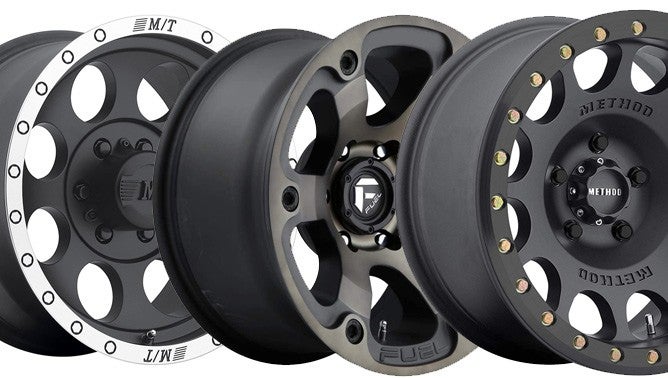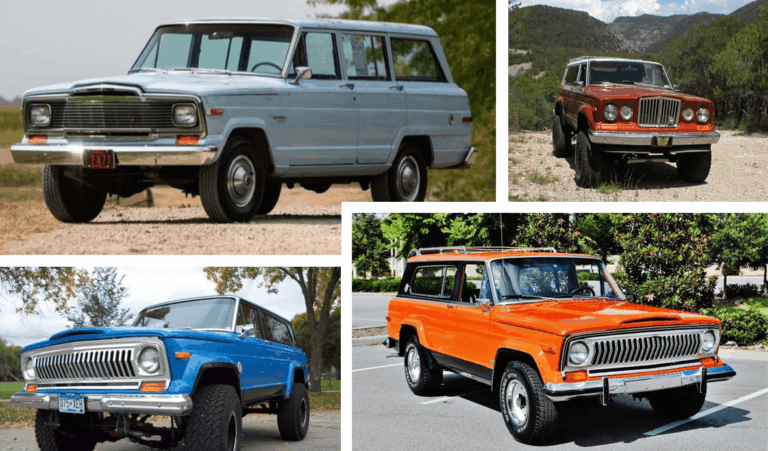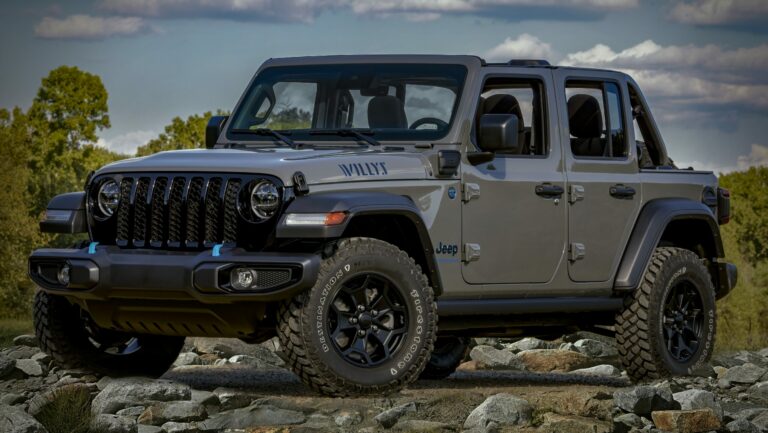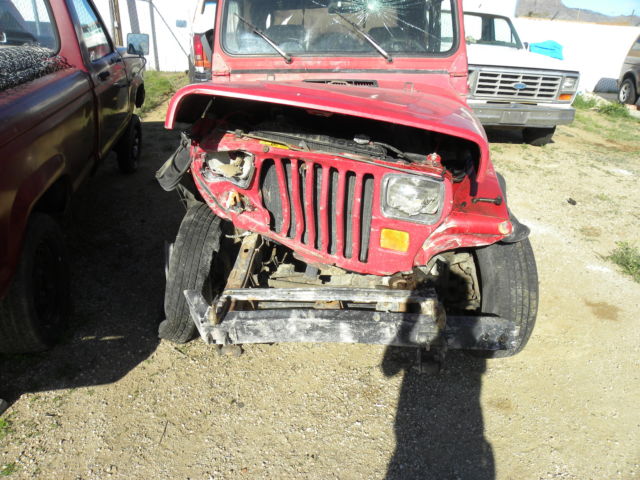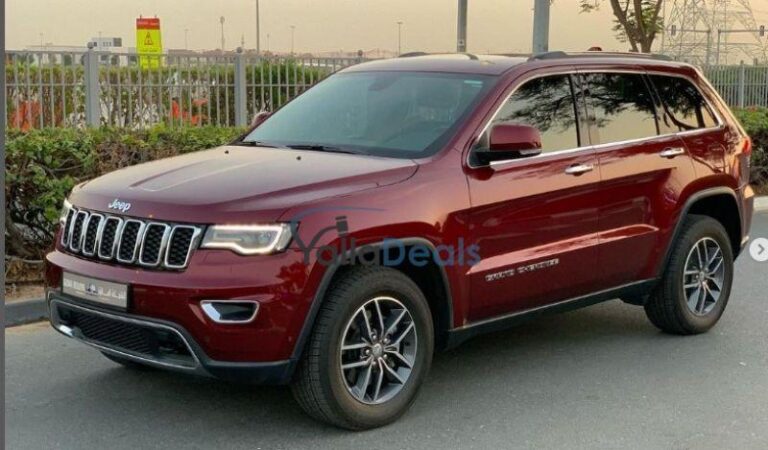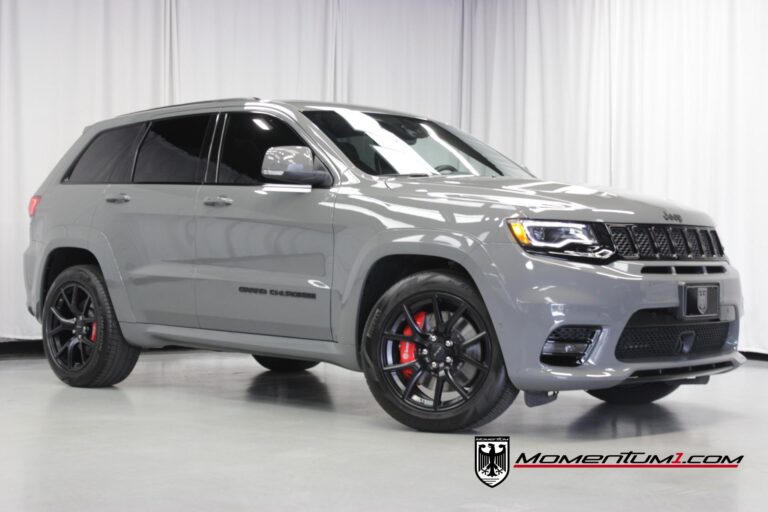Stock Jeep Wrangler Wheels For Sale: Your Ultimate Guide to Factory Rolling Stock
Stock Jeep Wrangler Wheels For Sale: Your Ultimate Guide to Factory Rolling Stock jeeps.truckstrend.com
The Jeep Wrangler is more than just a vehicle; it’s an icon, a lifestyle, and a symbol of adventure. For many owners, the journey of customization begins with its foundation: the wheels. While the aftermarket offers an endless array of options, there’s a significant and often overlooked market for "Stock Jeep Wrangler Wheels For Sale." These are the original equipment manufacturer (OEM) wheels that come standard on various Wrangler trims, from the rugged Sport to the luxurious Sahara and the formidable Rubicon. Far from being merely "basic," stock wheels offer a unique blend of benefits, from cost-effectiveness and guaranteed fitment to maintaining a classic factory aesthetic or serving as a reliable spare. Whether you’re looking to replace a damaged wheel, downgrade from oversized aftermarket rims, create a dedicated set for winter tires, or simply appreciate the clean, unadulterated look of a factory Jeep, understanding the market for stock Wrangler wheels is invaluable. This comprehensive guide will navigate you through everything you need to know about finding, evaluating, and purchasing stock Jeep Wrangler wheels.
Why Choose Stock Jeep Wrangler Wheels? Benefits Beyond the Obvious
Stock Jeep Wrangler Wheels For Sale: Your Ultimate Guide to Factory Rolling Stock
While the allure of custom wheels is strong, opting for stock Wrangler wheels brings a host of practical advantages that often make them the smarter choice for many owners:
- Cost-Effectiveness: This is perhaps the most significant benefit. Used stock wheels are considerably cheaper than new aftermarket options, allowing you to save hundreds, if not thousands, of dollars. Even new take-offs (wheels removed from a brand-new Jeep shortly after purchase) are often sold at a fraction of their retail price.
- Guaranteed Fitment and Compatibility: Stock wheels are designed by Jeep specifically for the Wrangler. This means you never have to worry about bolt patterns, offset, backspacing, or brake caliper clearance issues. They simply fit, as intended.
- Reliability and Durability: OEM wheels undergo rigorous testing to meet stringent automotive standards for strength, durability, and safety. They are built to withstand the diverse conditions a Jeep Wrangler is designed for, from highway cruising to moderate off-roading.
- Maintain Factory Aesthetic: For those who appreciate the original look of their Wrangler or want to restore it to its showroom condition, stock wheels are essential. They preserve the classic lines and design integrity of the vehicle.
- Ideal for Specific Applications:
- Winter Wheels: Have a dedicated set of stock wheels for your winter tires, making seasonal tire changes easier and extending the life of your summer or all-terrain tires.
- Spare Set: A matching stock spare wheel is crucial for consistency in emergencies, especially if you have a full-size spare.
- Downgrading/Resale: If you’re selling your modified Wrangler, returning it to stock wheels can sometimes broaden its appeal to a wider range of buyers.
- Mild Off-Roading: For casual trail use, stock wheels are perfectly capable and less prone to damage from rocks than some low-offset aftermarket wheels.


Understanding Stock Wrangler Wheel Specifications
Before diving into the market, it’s crucial to understand the key specifications that define Jeep Wrangler wheels. While stock wheels guarantee fitment for their intended model year, knowing these details helps in identifying what you need and understanding compatibility across different Wrangler generations.
- Bolt Pattern: All modern Jeep Wranglers (JK, JL, JT Gladiator) use a 5×5" (or 5x127mm) bolt pattern. This means five lug nuts arranged in a 5-inch diameter circle. This consistency simplifies cross-generation compatibility for wheels, though other factors like offset can still vary.
- Diameter and Width: Stock wheels come in various sizes depending on the trim level and year. Common diameters include 16", 17", 18", and 19", with widths typically ranging from 7.5" to 8.5". Rubicon models often feature 17-inch wheels optimized for larger tires.
- Offset and Backspacing: These measurements dictate how far the wheel sits relative to the hub. A positive offset means the hub mounting surface is towards the outside of the wheel, pulling the wheel inward. Negative offset pushes it outward. Stock wheels generally have a positive offset (e.g., +44.45mm for some JK wheels, +44mm for JL/JT). While less critical for stock-to-stock replacements, it’s vital if you’re mixing and matching or considering slightly wider tires.
- Center Bore: The hole in the center of the wheel that fits over the vehicle’s hub. Wranglers typically have a center bore of 71.5mm.

Where to Find Stock Jeep Wrangler Wheels For Sale
The market for stock Jeep Wrangler wheels is robust and diverse. Knowing where to look can significantly improve your chances of finding the perfect set at a great price.
-
Online Marketplaces:
- Facebook Marketplace/Groups: Local "Jeep Parts For Sale" or "Wrangler Owners" groups are goldmines. Many owners upgrade their wheels soon after purchase and sell their "take-offs." You can often find full sets with tires and TPMS sensors here.
- Craigslist: Similar to Facebook, but often requires more diligence in sifting through listings.
- eBay: A vast selection, but be mindful of shipping costs, which can be substantial for wheels. Look for local pickup options.
- Dedicated Jeep Forums: Websites like JL Wrangler Forums, JK Forum, or Wrangler Forum often have "For Sale" sections where enthusiasts trade parts.
-
Local Tire Shops and Customization Shops:
- Many shops that specialize in aftermarket wheels will take stock wheels as trade-ins or simply remove them for customers. They might have a stash of used stock wheels they’re willing to sell at a reasonable price. It’s worth calling around.
-
Dealerships (Parts Department):
- While more expensive, dealerships sometimes have new take-off wheels or can order replacements. This is often the last resort for cost-conscious buyers but guarantees brand-new condition.
-
Salvage Yards/Auto Recyclers:
- For single wheel replacements or a very budget-conscious approach, salvage yards can be an option. However, inspecting the condition meticulously is crucial here.
Inspecting and Buying Used Stock Wheels: A Practical Guide
Buying used wheels requires careful inspection to ensure you’re getting a safe and functional product.
-
Visual Inspection for Damage:
- Cracks: Pay close attention to the spokes, hub mounting surface, and bead seat area. Hairline cracks can be dangerous.
- Bends/Dents: Spin the wheel if possible (even by hand) to check for wobbles or flat spots. Look at the inner and outer lips for bends, which can cause air leaks or balancing issues.
- Curb Rash: Scratches and gouges on the outer lip from hitting curbs. Minor rash is cosmetic; deep gouges can compromise structural integrity.
- Corrosion/Peeling Finish: Especially common on older clear-coated aluminum wheels. Excessive corrosion can weaken the wheel or cause tire bead leaks.
- Lug Nut Holes: Ensure they are not elongated or damaged, which can lead to improper torque or wheel wobble.
-
Tire Pressure Monitoring System (TPMS) Sensors:
- Many stock wheels will come with TPMS sensors installed, especially "take-off" sets. Verify if they are included and if they are compatible with your Wrangler’s year. Sometimes, the sensors alone are worth a significant portion of the wheel’s value.
-
Tires (If Included):
- If the wheels come with tires, check the tread depth, even wear, and age (DOT code). Often, stock tires have limited life left if they’re being sold as take-offs, but they can still offer value.
-
Ask Questions and Request Photos:
- Always ask for detailed photos from multiple angles, especially of any imperfections.
- Inquire about the history of the wheels: "Were they ever involved in an accident?" "Why are you selling them?"
Types of Stock Jeep Wrangler Wheels: A Visual Overview
Jeep has offered a variety of stock wheel designs across different Wrangler generations and trim levels. Identifying them helps in knowing what you’re looking for and understanding their typical value.
- Jeep Wrangler JK (2007-2018):
- Sport/Sahara: Often featured 16" steel wheels, 17" five-spoke alloy wheels (e.g., Moab, Sahara), or 18" polished alloy wheels.
- Rubicon: Iconic 17" five-spoke aluminum wheels, often painted dark grey or silver, designed for off-road durability and clearance for larger tires.
- Jeep Wrangler JL (2018-Present) & JT Gladiator (2020-Present):
- Sport: Typically 17" steel wheels or 17" Tech Silver aluminum wheels.
- Sahara: Often 18" polished aluminum wheels or 18" "Granite Crystal" painted wheels, sometimes with a machined face.
- Rubicon: Distinctive 17" machined/painted aluminum wheels, often with a beadlock-capable design (though most are not true beadlocks from the factory). These are highly sought after.
- Special Editions: Various special editions (e.g., Willys, High Altitude, 80th Anniversary) feature unique wheel designs, often with specific finishes.
Pricing Stock Jeep Wrangler Wheels: What to Expect
The price of stock Jeep Wrangler wheels varies significantly based on several factors:
- Condition: New "take-offs" will command the highest price, followed by excellent, good, and fair condition. Damaged wheels (cracks, severe bends) should be avoided unless you plan on professional repair, which can be costly.
- Rarity/Desirability: Rubicon wheels (especially JL/JT) are generally more sought after and thus more expensive than basic Sport steel wheels. Special edition wheels can also fetch higher prices.
- Inclusion of Tires and TPMS: A set of wheels with good tires and working TPMS sensors will naturally cost more than bare wheels. This can be a great value if you need both.
- Location: Local pickup can save on shipping, which can be a major expense for wheels. Prices may also vary by region.
- Number of Wheels: Buying a full set of four or five (for a matching spare) is usually more cost-effective per wheel than buying singles.
Here’s a representative pricing table for stock Jeep Wrangler wheels (prices are estimates for a single wheel in good-to-excellent used condition, without tires or TPMS unless specified):
| Wheel Type (Model/Trim) | Size (Diameter x Width) | Material | Typical Condition | Estimated Price Range (Per Wheel) | Notes |
|---|---|---|---|---|---|
| JK Sport (Steel) | 16" x 7" | Steel | Good | $25 – $50 | Basic, durable; often used for spares or dedicated off-road tires. |
| JK Sahara (Alloy) | 17" x 7.5" | Alloy | Good – Excellent | $75 – $125 | Common, many designs; good for daily driving. |
| JK Rubicon (Alloy) | 17" x 7.5" | Alloy | Good – Excellent | $100 – $175 | Popular, rugged look; often sold as a set of 5. |
| JL Sport (Steel) | 17" x 7.5" | Steel | Good | $30 – $60 | Entry-level, often replaced early. |
| JL Sport (Alloy) | 17" x 7.5" | Alloy | Good – Excellent | $80 – $150 | Lighter than steel, more aesthetic. |
| JL Sahara (Alloy) | 18" x 7.5" | Alloy | Good – Excellent | $120 – $200 | Common "take-off," often available with tires. |
| JL Rubicon (Alloy) | 17" x 7.5" | Alloy | Good – Excellent | $150 – $250 | Highly sought after, distinct design; premium price. |
| JT Gladiator Sport (Steel) | 17" x 7.5" | Steel | Good | $30 – $60 | Same as JL Sport steel. |
| JT Gladiator Overland (Alloy) | 18" x 7.5" | Alloy | Good – Excellent | $120 – $200 | Similar to JL Sahara wheels. |
| JT Gladiator Rubicon (Alloy) | 17" x 7.5" | Alloy | Good – Excellent | $150 – $250 | Same as JL Rubicon wheels. |
| Special Edition (Alloy) | Varies | Alloy | Excellent | $180 – $300+ | E.g., Willys, High Altitude, 80th Anniversary, Xtreme Recon. Price depends on rarity. |
| Full Set (4-5 wheels w/ tires & TPMS) | Varies | Varies | Good – Excellent | $600 – $1500 | Excellent value, especially for take-offs with low-mileage tires. |
Note: Prices are highly variable and subject to change based on market demand, location, condition, and inclusion of tires/TPMS sensors. Always verify with the seller.
Installation and Maintenance Tips
Once you’ve acquired your stock wheels, proper installation and ongoing maintenance are key to their longevity and your safety.
- Professional Installation Recommended: While seemingly straightforward, having wheels mounted and balanced by a professional ensures proper fitment, even tire wear, and optimal performance.
- Torque Specifications: Always use a torque wrench to tighten lug nuts to the manufacturer’s specified torque (e.g., 95-100 ft-lbs for most Wranglers). Overtightening or undertightening can cause issues.
- Tire Rotation: Rotate your tires regularly (every 5,000-7,500 miles) to promote even wear, especially if you have a full-size matching spare that is included in the rotation.
- Cleaning: Clean your wheels regularly with appropriate wheel cleaner to prevent brake dust buildup and corrosion, preserving their finish.
- Inspection: Periodically inspect your wheels for any signs of damage, especially after off-road excursions.
Challenges and Solutions When Buying Stock Wheels
While generally a positive experience, buying used stock wheels can present a few challenges:
- Challenge: Finding a Specific Set: You might be looking for a very particular wheel design or year.
- Solution: Be patient and cast a wide net across all online platforms. Set up alerts if possible.
- Challenge: Shipping Costs: Wheels are heavy and bulky, making shipping expensive.
- Solution: Prioritize local sellers on Facebook Marketplace and Craigslist. Be willing to drive a reasonable distance for a good deal.
- Challenge: Condition Discrepancies: Photos might not fully represent the actual condition.
- Solution: Always ask for more detailed photos, especially of any reported damage. If possible, inspect in person before purchase. Ask for a video call if an in-person visit isn’t feasible.
- Challenge: TPMS Compatibility: Older TPMS sensors might not work with newer systems, or vice-versa.
- Solution: Clarify the year of the wheels and your Jeep. Be prepared to purchase new TPMS sensors if necessary, as they might need to be programmed to your vehicle.
Conclusion: The Enduring Value of Stock Jeep Wrangler Wheels
The market for "Stock Jeep Wrangler Wheels For Sale" is a vibrant ecosystem offering practical, cost-effective, and reliable solutions for Wrangler owners. Whether you’re replacing a damaged wheel, preparing for winter, or simply prefer the authentic factory aesthetic, choosing OEM wheels provides guaranteed fitment, proven durability, and often significant savings compared to aftermarket alternatives. By understanding the specifications, knowing where to look, and performing diligent inspections, you can confidently navigate this market and find the perfect set of wheels to keep your legendary Jeep Wrangler rolling smoothly on or off the beaten path. Embrace the original, and keep the spirit of adventure alive with the trusted foundation of stock Jeep wheels.
Frequently Asked Questions (FAQ)
Q1: Are stock Jeep Wrangler wheels good for off-roading?
A1: Yes, absolutely! Stock Rubicon wheels are designed for serious off-roading, and even Sport/Sahara wheels are perfectly capable for moderate trails. Their positive offset keeps them tucked in, reducing the chance of hitting rocks compared to some aggressive aftermarket wheels.
Q2: Will JL/JT wheels fit on a JK Wrangler?
A2: Yes, generally. All JK, JL, and JT (Gladiator) Wranglers share the 5×5" (5x127mm) bolt pattern and a 71.5mm center bore. The primary difference is often the offset, with JL/JT wheels having a slightly higher positive offset (around +44mm) than many JK wheels, which can make them sit further inward on a JK. This might require wheel spacers if you’re running very wide tires.
Q3: Can I run larger tires on stock wheels?
A3: It depends on the specific stock wheel size and your Wrangler’s lift. Many owners run slightly larger tires (e.g., 33-inch tires on 17-inch Rubicon wheels) without issues, especially with a small lift or leveling kit. However, going too large can cause rubbing, especially at full steering lock or suspension compression. Consult tire size charts for your specific model and wheel width.
Q4: Should I buy stock wheels with or without tires?
A4: If you need both wheels and tires, buying a "take-off" set with low-mileage tires and TPMS sensors is often the best value. If you already have good tires or are buying new ones, bare wheels will be cheaper. Always check the tire’s DOT date code to ensure they aren’t too old.
Q5: How do I know if the TPMS sensors included with the wheels are compatible with my Jeep?
A5: TPMS sensor compatibility can be tricky. Generally, JK (2007-2012) sensors operate on a different frequency than JK (2013-2018) and JL/JT sensors. If the wheels are from the same generation or a newer one (JL/JT wheels on a 2013+ JK), they might be compatible, but often need to be "relearned" by your vehicle. It’s safest to assume you might need to buy new, compatible sensors for your specific model year, or have a tire shop reprogram them.

